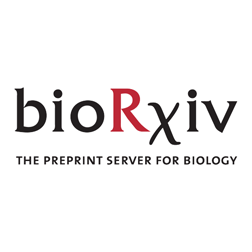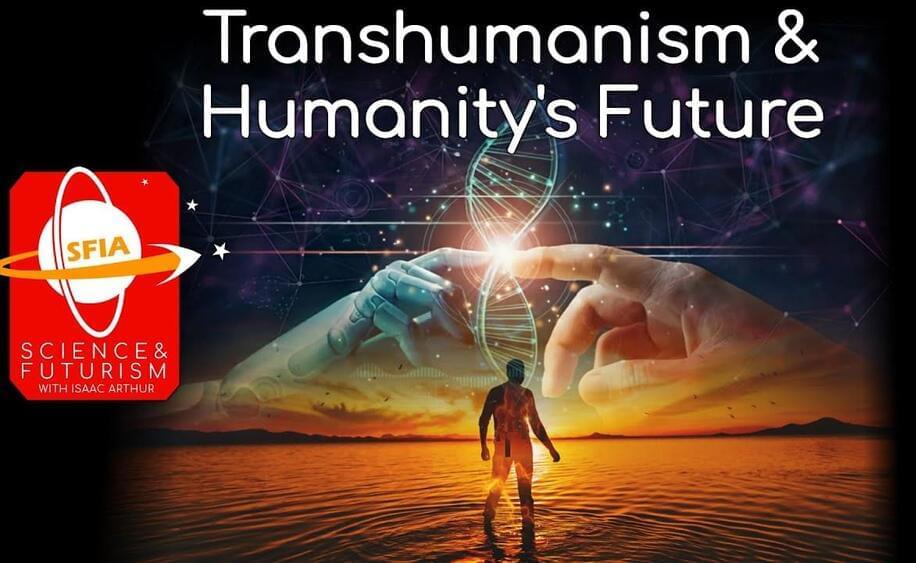Jan 4, 2023
Nature Biotechnology
Posted by Dan Breeden in categories: bioengineering, biotech/medical, food
Is a monthly journal publishing new concepts in biological technology of relevance to bioengineering, medicine, energy, agriculture, food…
Is a monthly journal publishing new concepts in biological technology of relevance to bioengineering, medicine, energy, agriculture, food…
 Clustered regularly interspaced short palindromic repeats (CRISPR)-associated Cas9 protein is an effector that plays a major role in a prokaryotic adaptive immune system, by which invading DNA can be targeted and cut for inactivation. The Cas9 endonuclease is directed to target sites by a guide RNA (gRNA) where Cas9 can recognize specific sequences (PAMs) in foreign DNA, which then serve as an anchoring point for cleavage of the adjacent RNA-matching DNA region. Although the CRISPR-Cas9 system has been widely studied and repurposed for diverse applications (notably, genome editing), its origin and evolution remain to be elucidated. Here, we investigate the evolution of Cas9 from resurrected ancient nucleases (anCas) in extinct firmicutes species as old as 2,600 myr to the current day. Surprisingly, we demonstrate that these ancient forms were much more flexible in their PAM and gRNA scaffold requirements compared to modern day Cas9 enzymes. In addition, anCas portrays a gradual paleoenzymatic adaptation from nickase to double-strand break activity, suggesting a mechanism by which ancient CRISPR systems could propagate when harboring Cas enzymes with minimal PAMs. The oldest anCas also exhibit high levels of activity with ssDNA and ssRNA targets, resembling Cas nucleases in related system types. Finally, we illustrate editing activity of the anCas enzymes in human cells. The prediction and characterization of anCas proteins uncovers an unexpected evolutionary trajectory leading to ancient enzymes with extraordinary properties.
Clustered regularly interspaced short palindromic repeats (CRISPR)-associated Cas9 protein is an effector that plays a major role in a prokaryotic adaptive immune system, by which invading DNA can be targeted and cut for inactivation. The Cas9 endonuclease is directed to target sites by a guide RNA (gRNA) where Cas9 can recognize specific sequences (PAMs) in foreign DNA, which then serve as an anchoring point for cleavage of the adjacent RNA-matching DNA region. Although the CRISPR-Cas9 system has been widely studied and repurposed for diverse applications (notably, genome editing), its origin and evolution remain to be elucidated. Here, we investigate the evolution of Cas9 from resurrected ancient nucleases (anCas) in extinct firmicutes species as old as 2,600 myr to the current day. Surprisingly, we demonstrate that these ancient forms were much more flexible in their PAM and gRNA scaffold requirements compared to modern day Cas9 enzymes. In addition, anCas portrays a gradual paleoenzymatic adaptation from nickase to double-strand break activity, suggesting a mechanism by which ancient CRISPR systems could propagate when harboring Cas enzymes with minimal PAMs. The oldest anCas also exhibit high levels of activity with ssDNA and ssRNA targets, resembling Cas nucleases in related system types. Finally, we illustrate editing activity of the anCas enzymes in human cells. The prediction and characterization of anCas proteins uncovers an unexpected evolutionary trajectory leading to ancient enzymes with extraordinary properties.
R. P-J., B. A-L. are co-inventors on patent application filed by CIC nanoGUNE and licenced to Integra Therapeutics S.L. relating to work in this article. A. S-M. and M.G. are co-founders of Integra Therapeutics S.L. B.P.K is an inventor on patents and/or patent applications filed by Mass General Brigham that describe genome engineering technologies. B.P.K. is a consultant for Avectas Inc., EcoR1 capital, and ElevateBio, and is an advisor to Acrigen Biosciences and Life Edit Therapeutics.
New research in the journal Nature Aging takes a page from the field of renewable energy and shows that genetically engineered mitochondria can convert light energy into chemical energy that cells can use, ultimately extending the life of the roundworm C. elegans. While the prospect of sunlight-charged cells in humans is more science fiction than science, the findings shed light on important mechanisms in the aging process.
“We know that mitochondrial dysfunction is a consequence of aging,” said Andrew Wojtovich, Ph.D., associate professor of Anesthesiology and Perioperative Medicine and Pharmacology & Physiology at the University of Rochester Medical Center and senior author of the study.
“This study found that simply boosting metabolism using light-powered mitochondria gave laboratory worms longer, healthier lives. These findings and new research tools will enable us to further study mitochondria and identify new ways to treat age-related diseases and age healthier.”
A Peninsula biotech startup cofounded by pioneering geneticist George Church — who already is working to engineer the woolly mammoth out of extinction — is trying to raise as much as $5 million in a crowdfunding effort to design healthier, longer-living pets.
AdoraPet Biosciences Inc. of San Mateo plans to apply the genome-engineering CRISPR technology at the egg stage of dogs and cats or insert CRISPR-modified DNA into eggs, to make nonallergenic pets that don’t shed and ultimately live longer, are free of genetic diseases caused by inbreeding and are resistant to cancer and other serious diseases.

Logic gates in biology can be set up to lead to timing important biological events. How is this done?
Edit: at 4:00, not all pathways make use of this motif. This is just one way timing can happen in biology.
Continue reading “Decoding nature’s masterful engineering using math” »

To claim your matching donation with Givewell, go to https://www.givewell.org/isaac.
In the future, humanity may embrace genetic engineering and cybernetic augmentation of mind and body, but what does this Transhuman future look like? And should we embrace or resist these paths?
Visit our Website: http://www.isaacarthur.net.
Support us on Patreon: https://www.patreon.com/IsaacArthur.
Support us on Subscribestar: https://www.subscribestar.com/isaac-arthur.
Facebook Group: https://www.facebook.com/groups/1583992725237264/
Reddit: https://www.reddit.com/r/IsaacArthur/
Twitter: https://twitter.com/Isaac_A_Arthur on Twitter and RT our future content.
SFIA Discord Server: https://discord.gg/53GAShE
Although genetically modified foods still get a bit of a bad rap, there are actually many good reasons why modifying an organism’s genetics may be worthwhile. For example, many breeds of genetically modified foods have made them more resistant to disease.
It’s also possible to modify foods to make them more nutritious. Take, for example, golden rice. This grain was engineered to have higher levels of vitamin A in order to tackle deficiencies of this nutrient in impoverished countries.
A purple tomato, created using genetic modification, may be available to buy in the U.S. as soon as 2023.
Scientists have labored for decades to understand how brain structure and functional connectivity drive intelligence. A new analysis offers the clearest picture yet of how various brain regions and neural networks contribute to a person’s problem-solving ability in a variety of contexts, a trait known as general intelligence, researchers report.
They detail their findings in the journal Human Brain Mapping.
The study used “connectome-based predictive modeling” to compare five theories about how the brain gives rise to intelligence, said Aron Barbey, a professor of psychology, bioengineering and neuroscience at the University of Illinois Urbana-Champaign who led the new work with first author Evan Anderson, now a researcher for Ball Aerospace and Technologies Corp. working at the Air Force Research Laboratory.
In April 2016, Waseem Qasim, a professor of cell and gene therapy, was intrigued by a new scientific paper that described a revolutionary way to manipulate DNA: basic gene editing. The articlepublished by David Liu’s lab at the Broad Institute of MIT and Harvard, described a version of Crispr gene editing that allowed for more precise changes than ever before.
Once genes that influence intelligence are identified, tools like gene editing and IVF could be used to make us smarter.